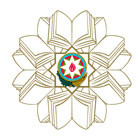Copper craftsmanship of Lahij
In one of the mountain valleys of the Greater Caucasus in the north of Azerbaijan lies a village of coppersmiths- Lahij. They have been living here since ancient times. According to legend, Lahij was founded by the last king of the era of heroes, Shah Kai Khosrow, who was glorified by Ferdowsi.
The history of Lahij is full of mysteries. However, local legend has it that after a long journey, Kai Khosrow, who voluntarily left his throne, settled on a steep bank of the Girdimanchay River where he founded a city together with several of his close associates.
It is difficult to judge how reliable this legend is, but Lahij appeared a very long time ago indeed, in the 3rd-4th centuries, and it was built as a city from the first quarters. This is evidenced by a three-level underground reservoir laid a millennium and a half ago under the main street of Lahij. Drinking water flows in it on top, technical water below, and there is a tunnel for sewage at the bottom.
The streets and alleys of Lahij were paved with river stone. All houses were built from stone too - more often two-storey and less often three-storey houses. Workshops and shops, of which there were a lot, were set up on the first floor. The city was divided into quarters, and each of them had a square with a mosque and a public bath. At night, the streets were lit with lanterns and torches for the convenience of residents and for protection from thieves and evil people.
The city had neither ramparts nor other fortifications. Medieval Lahij could afford such carelessness, since only a narrow road or, in fact, a path, which could be cut off byimpassable rubble of stones at any moment, led to it through the mountains. But for merchant caravans the route was always open. And they went to Lahij one after another, as the city was famous in the entire East for products of its craftsmen, mainly for the, sharp and flexible blades that pierced even metal armor. No less popular among buyers were products of Lahij coppersmiths. Covered with bas-reliefs and intricate lettering and decorated with sayings from the Koran, sumptuous dishes and bowls easily found buyers on any market. Merchants readily bought boots, saddles, belts and bridles sewn in Lahij as they were made from high quality soft and durable leather. Finally, they certainly bought carpets from Lahij - bright, colorful, warm and fluffy.
By the end of the 19th century, there were nearly four dozen different crafts here. Products from Lahij were so good and were made with such grace and skill that they still take places of honor in the world’s leading museums, including the Louvre.
This amazing city of craftsmen, which emerged in the heart of the mountains, as if by magic, successfully lived up to the 20th century without changing its appearance or the lifestyle of local residents. It was not affected by natural or social calamities, but scientific and technological progress became a real disaster for it. Unable to withstand competition, workshops closed although there used to be more than two hundred of them here, while people migrated to big cities. Lahij became empty and impoverished. And, perhaps, it would have gone into oblivion, if historians had not thought better of it. After all, it was a museum city. In addition, the descendants of the skilled masters of the past were able not only to maintain the workshop equipment, but also to preserve the secrets of melting and forging, metal processing and engraving. So Lahij was announced a state historical and cultural reserve of the 15th-19th centuries in Azerbaijan. It was included in the Great Silk Road international tourist route. The new history of Lahij began from that moment.
A modern road, by which dozens of buses with tourists arrive in Lahij every day, was built to the city. Shops are crowded again, but curious people gather outside workshops that have started working again: everyone is interested in seeing how a knife is forged or a dish is made from a copper sheet. Comfortable hotels, cafes and restaurants appeared in and around Lahij. And the town itself began to expand and became overgrown with new streets and houses. They are built with all medieval architectural canons as before so as not to disrupt the uniformity of buildings, but with completely modern amenities - electricity, TV and Internet.
After all, it is the 21st century, and ancient Lahij perfectly fits into it.
In 2015, the copper craftsmanship of Lahij was inscribed on the UNESCO Representative List of the Intangible Cultural Heritage. And there is hope that it will join the repository of artifacts created by humanity in its long history.
















